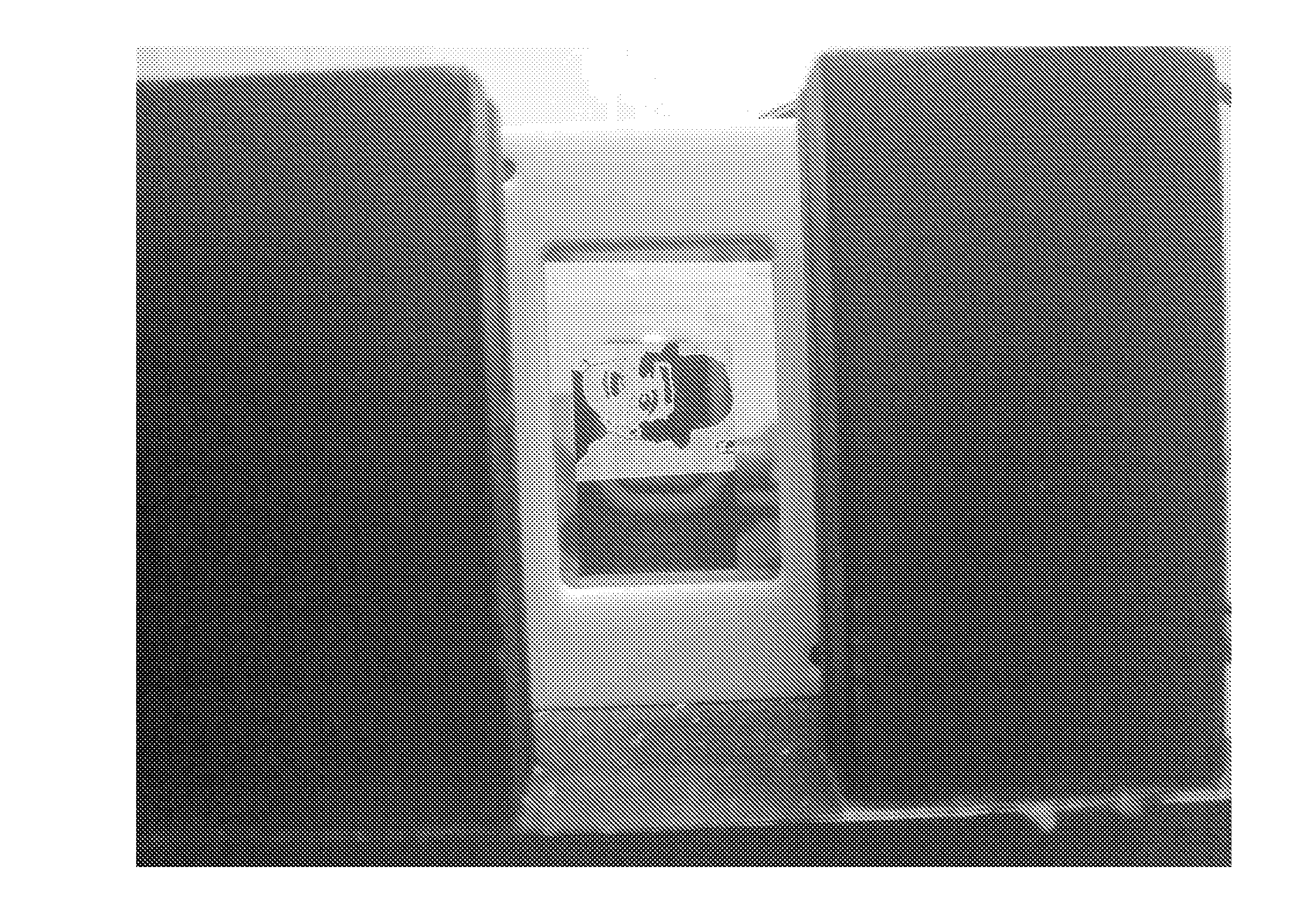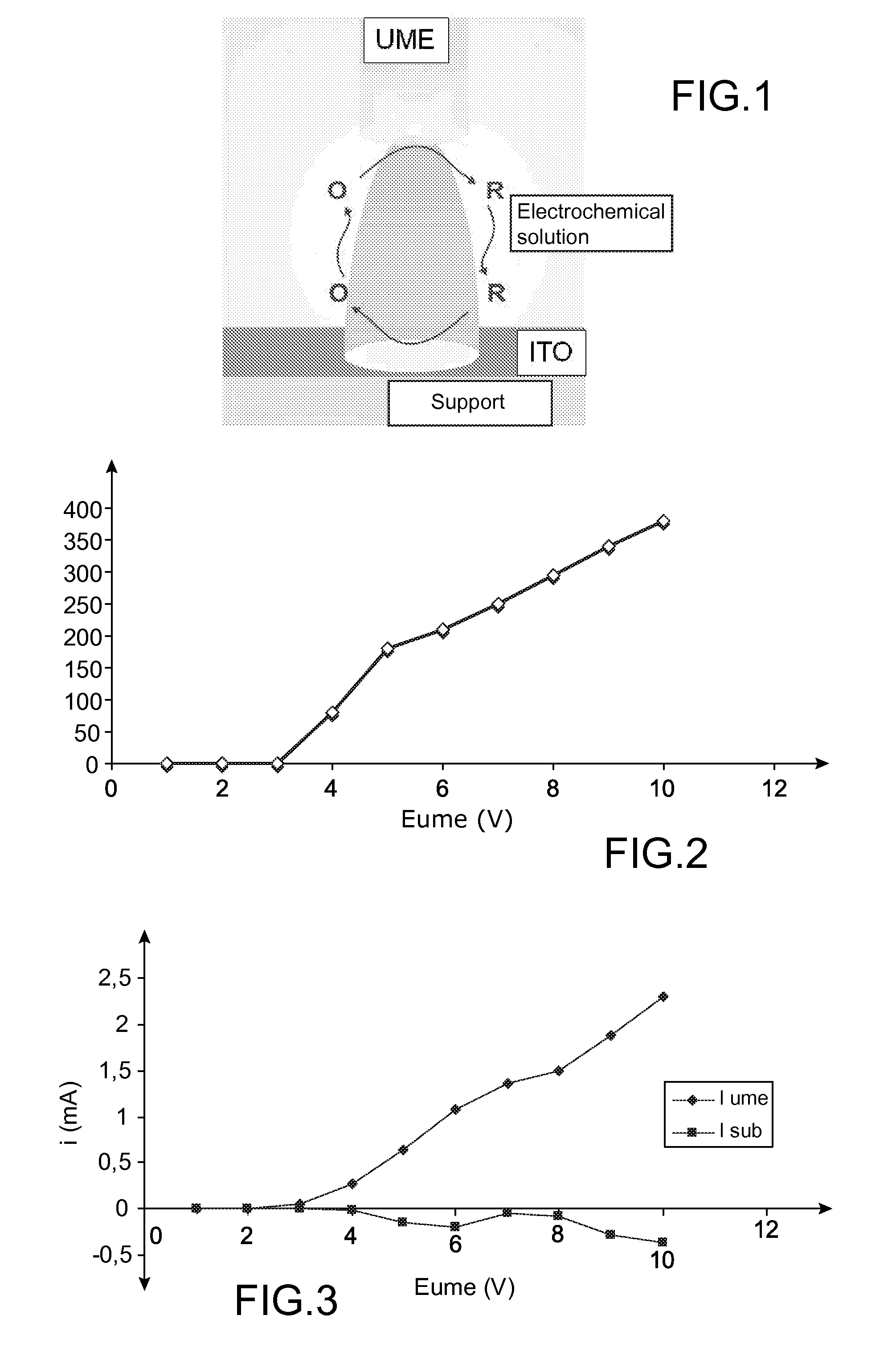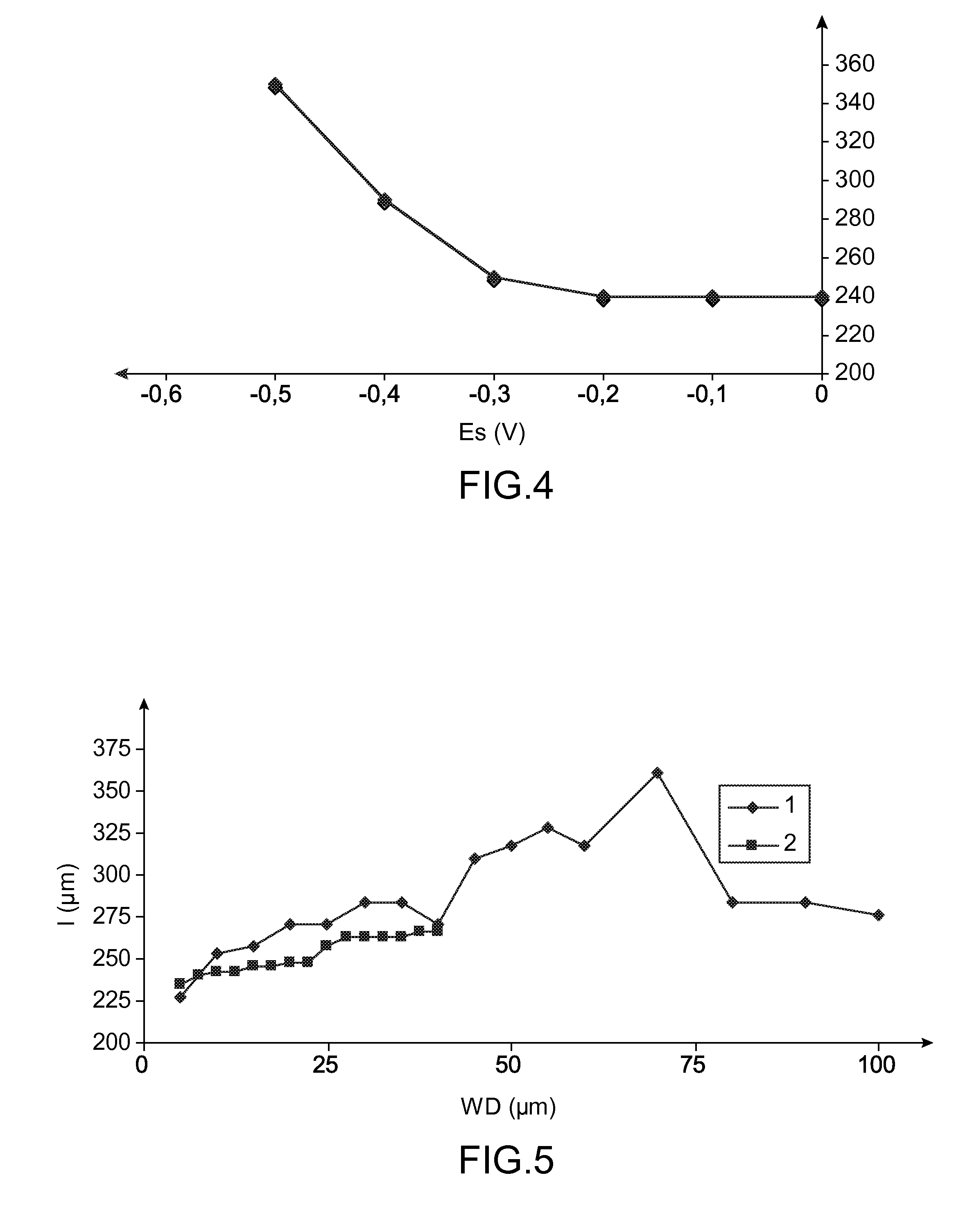Method for etching conductive metal oxide layer using microelectrode
a technology of conductive metal oxide and microelectrode, which is applied in the field of capacitors, can solve the problems of lateral attack of the ito layer, deterioration of the electrical properties of the ito electrode, and non-controllable forms at the edges of the etched ito layer
- Summary
- Abstract
- Description
- Claims
- Application Information
AI Technical Summary
Benefits of technology
Problems solved by technology
Method used
Image
Examples
first embodiment
[0047]In a first embodiment, the electrochemical solution, hereinafter also called the electrolytic solution, used in the present invention comprises at least one carboxylic acid.
[0048]By > is meant a chemical compound comprising at least one —COOH group.
[0049]In a first variant, this chemical compound only comprises one —COOH group. In this variant, the chemical compound may further comprise an ethylene unsaturation.
[0050]In a second variant, this chemical compound comprises at least two —COOH groups and in particular 3 or 4-COOH groups. In this variant, the chemical compound may further comprise an ethylene unsaturation.
[0051]Taking into account these two variants, the carboxylic acid used in the electrochemical solution is chosen from the group consisting of carbonic acid, acetic acid, propanoic acid, butanoic acid, acrylic acid, methacrylic acid, methyl methacrylic acid, ethacrylic acid, alpha-chloroacrylic acid, alpha-cyano acrylic acid, crotonic acid, alpha-phenyl acrylic acid...
second embodiment
[0053]In a second embodiment, the electrochemical solution used in the present invention comprises at least one weak acid. Advantageously, said weak acid has a pKa higher than 4, in particular between 4 and 13 more particularly between 4 and 9.
[0054]The pKa value, which corresponds to −log10(Ka) wherein Ka represents the ionisation constant, of an acid is either known to those skilled in the art since it can be found in reference works, or is accessible experimentally using techniques such as pH-metric techniques in particular well known to those skilled in the art.
[0055]As non-limiting examples of weak acids which can be used in the present invention, mention may be made of boric acid, hydrosulfuric acid, pyridinium ion and dihydrophosphate. It is to be noted that some of the previously listed carboxylic acids are also weak acids in the meaning of the present invention.
[0056]Irrespective of the weak acid used, it is present in the electrochemical solution in an amount of between 10...
third embodiment
[0057]In a third embodiment, the electrochemical solution used in the present invention has at least one compound capable of chelating (complexing) at least one metal ion.
[0058]This compound is either an entity capable of chelating (complexing) at least one metal ion, or it comprises a group capable of chelating (complexing) at least one metal ion. This entity (or this group) is a neutral molecular structure allowing the complexing of cations i.e. a structure having free doublets, hence containing non-quaternized nitrogen atoms, sulfur atoms or oxygen atoms. Advantageously, an entity (or group) capable of chelating (complexing) at least one metal ion is chosen from the group consisting of a group among amines, amides, ethers, carbonyls, carboxyls, carboxylates, phosphines, phosphine oxides, thio-ethers, disulfides, ureas, crown ethers, aza-crowns, thio-crowns, cryptates, sepulcrates, podands, porphyrins such as tetrakis (benzoic acid)-4,4′,″,4′″-(porphyrin-5,10,15,20-tetrayl), calix...
PUM
| Property | Measurement | Unit |
|---|---|---|
| pKa | aaaaa | aaaaa |
| pKa | aaaaa | aaaaa |
| band gap | aaaaa | aaaaa |
Abstract
Description
Claims
Application Information
 Login to View More
Login to View More - R&D
- Intellectual Property
- Life Sciences
- Materials
- Tech Scout
- Unparalleled Data Quality
- Higher Quality Content
- 60% Fewer Hallucinations
Browse by: Latest US Patents, China's latest patents, Technical Efficacy Thesaurus, Application Domain, Technology Topic, Popular Technical Reports.
© 2025 PatSnap. All rights reserved.Legal|Privacy policy|Modern Slavery Act Transparency Statement|Sitemap|About US| Contact US: help@patsnap.com



